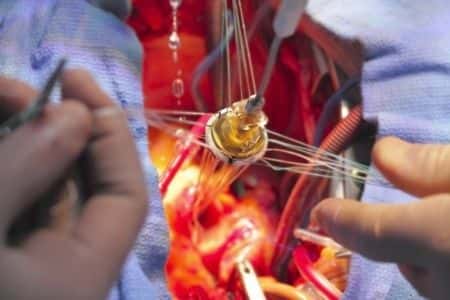Patient Dies Following Aortic Valve Replacement
Updated on
This case takes place in North Dakota and involves an elderly male patient who underwent an aortic valve replacement that was met with difficulty. The patient’s valve appeared to have a high gradient, which was confirmed on a post operative cath lab evaluation. The patient returned to the OR and underwent removal of the first valve, and an aortic root replacement with single vessel bypass grafting was performed. The patient’s recovery was met with significant coagulopathy and bleeding along with heart failure, generalized edema and an ascending aortic aneurysm. As a result the patient was sent to the ICU with an open chest and returned for a mediastinal washout with temporary dressing closure. Hepatorenal failure and multiorgan system failure ensued and life support was withdrawn after he developed massive acidosis which was thought to be linked to an abdominal event.
Question(s) For Expert Witness
1. How do you prevent placing the wrong size valve requiring a corrective procedure?
2. Could this patient's complications have been avoided if the correct valve was placed initially, possibly avoiding the coagulopathic complications in the second procedure?
Expert Witness Response E-007584
 There are different options to enlarge the aortic valve annulus to allow placement of a larger prosthesis than the initial annulus size would permit. Each option is associated with unique risks and difficulties. In addition, several valve types and implantation techniques can also help with the issue of small aortic valve annulus. Nonetheless, in this case, it's not clear is the high gradient is related to the fact that the valve that was placed initially was the "wrong" size or if there was another mechanism of its obstruction. Redo surgery and exposure to another prolonged bypass for a more complex procedure likely contributed to coaguloplathy. However, that can be due to the fact that the surgeon was forced to do the more complex procedure after he failed the initial, more conservative, procedure. In other words, the patient might have had risk factors that would have made the root replacement too risky and therefore it was reasonable to do the more simple procedure first. So, you can't really say that you could have avoided those complications if he had undergone the root replacement from the beginning. Re-exposure to bypass did not help though.
There are different options to enlarge the aortic valve annulus to allow placement of a larger prosthesis than the initial annulus size would permit. Each option is associated with unique risks and difficulties. In addition, several valve types and implantation techniques can also help with the issue of small aortic valve annulus. Nonetheless, in this case, it's not clear is the high gradient is related to the fact that the valve that was placed initially was the "wrong" size or if there was another mechanism of its obstruction. Redo surgery and exposure to another prolonged bypass for a more complex procedure likely contributed to coaguloplathy. However, that can be due to the fact that the surgeon was forced to do the more complex procedure after he failed the initial, more conservative, procedure. In other words, the patient might have had risk factors that would have made the root replacement too risky and therefore it was reasonable to do the more simple procedure first. So, you can't really say that you could have avoided those complications if he had undergone the root replacement from the beginning. Re-exposure to bypass did not help though.
About the author
Joseph O'Neill
Joe has extensive experience in online journalism and technical writing across a range of legal topics, including personal injury, meidcal malpractice, mass torts, consumer litigation, commercial litigation, and more. Joe spent close to six years working at Expert Institute, finishing up his role here as Director of Marketing. He has considerable knowledge across an array of legal topics pertaining to expert witnesses. Currently, Joe servces as Owner and Demand Generation Consultant at LightSail Consulting.
Subscribe to our newsletter
Join our newsletter to stay up to date on legal news, insights and product updates from Expert Institute.
Sign up nowFind an expert witness near you
What State is your case in?
Subscribe to our newsletter
Join our newsletter to stay up to date on legal news, insights and product updates from Expert Institute.



